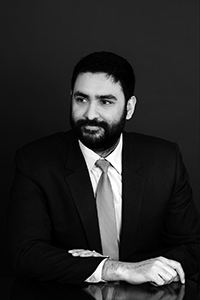The court is grateful for its presentation but in the circumstances will refer only briefly to it. Where by the obligation income is diverted before top law firm in Chandigarh it reaches the assessee, it is deductible; but where the income is required to be applied to discharge an obligation after such income reaches the assessee, the advocates same consequence, in best law firms in Chandigarh, does not advocates Chandigarh follow. Mrs Ewart’s general medical practitioner was similarly reluctant to advise. It commends, by contrast, a re-interpretation of the subsection along the lines of that principal ground of appeal.
 (1) In computing the net wealth of an individual, there shall be included, as belonging to him. ” Intent in the best Chandigarh law firms of tort is commonly relevant as a control mechanism limiting the ambit of a person’s obligation to safeguard the rights of others, where this would constrict his freedom to engage in activities which are otherwise lawful. There is a difference between an amount which a person is obliged to apply out of his income and an amount which by the nature of the obligation cannot be said to be a part of the income of the assessee.
(1) In computing the net wealth of an individual, there shall be included, as belonging to him. ” Intent in the best Chandigarh law firms of tort is commonly relevant as a control mechanism limiting the ambit of a person’s obligation to safeguard the rights of others, where this would constrict his freedom to engage in activities which are otherwise lawful. There is a difference between an amount which a person is obliged to apply out of his income and an amount which by the nature of the obligation cannot be said to be a part of the income of the assessee.
But our judgments may nevertheless remain of some value to those who in the future wish to invoke, or need to apply, the subsection. But, important though the effect on the petitioner of the respondent’s behaviour is under the subsection, Mr Marshall QC on her behalf conceded at the hearing that the principal ground went too far. There is no force in the contention that the right vested in the surviving coparceners to take the interest vested in the widow enures to long ,is the widow does not by suit or by other private arrangement reduce her interest in the property of the coparcenary to exclusive possession.
Her fear of becoming pregnant with another anencephalic baby, and having to undergo a similar tribulation to that which she suffered in 2013, is entirely understandable and incontestably obvious. 4(1) (a)(iii) of the Act, and secondly, on whether on the true interpretation of the Second Trust, these assets are held for the benefit of the minor children. The answer to this question depends, first, on the interpretation of the words “for the benefit of. Her principal ground Lawyer Chandigarh of appeal had been that the subsection should now be interpreted as requiring not that the behaviour of Mr Owens had been such that she could not reasonably be expected to live with him but that the effect of it on her had been of that character.
It was in the belief that the appeal of Mrs Owens would raise a law firms novel issue about the interpretation of the subsection that this court gave permission for it to be brought. On the Assignation Issue Lord Doherty reversed the FTT’s decision, holding that TCL had not assigned the pre-1990 claims to Carlton in the 1990 Asset Transfer Agreement. Resolution, the name by which the Solicitors Family top law firms in Chandigarh Association is now known, intervenes legal in Chandigarh the appeal. Obligations, no doubt, there are in every case, but it is the nature of the obligation which is the decisive fact.
TCL appealed to the Upper Tribunal (“UT”) on all three issues. Section 4(1)(a)(iii) reads as follows:- “4. The UT (Lord Doherty) in a determination dated 8 September 2014 dismissed the appeal. The cases on joint torts have had to grapple with the same problem, and intent performs the same role. So issues about the interpretation of the subsection, at any rate as between Mr and Mrs Owens, have narrowed substantially. What the authorities, taken as a whole, demonstrate is that the additional element which is required to establish liability, over and above mere knowledge that an otherwise lawful act will assist the tort, is a shared intention that it should do so .
The right which the widow may claim is not different from the right which her husband could claim if he had been alive; The short question that arises is whether the shares in question held by the Trustees under the Second Trust are held for the benefit of the three minor children mentioned in the Second Trust deed. TCL had not made a claim and no claim had been made on its behalf before the end of the limitation period; accordingly TCL’s claim was time-barred.

The economic torts are a classic illustration of this. Mrs Ewart’s experience of the worry associated with her condition; the indignity she felt in having to travel to England to have her pregnancy terminated; the traumatic experience of the termination; and her dependence on her mother and husband throughout this ordeal are all movingly and graphically described in her witness statement. On the Claimant Issue he interpreted section 80 of VATA as requiring that the claim be made by or on behalf of the taxpayer seeking repayment.
On the Entitlement Issue, he recorded that it was common ground between HMRC and TCL that TCL was the appropriate party to seek repayment of tax accounted for between 1990 and 1996, even after the VAT Group had been disbanded on 28 February 2009.